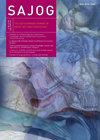A study to establish normal reference values of urine flow parameters in healthy South African females
IF 0.3
Q4 OBSTETRICS & GYNECOLOGY
引用次数: 1
Abstract
Background. Several studies have demonstrated the negative impact of lower urinary tract symptoms on health-related quality of life domains. Uroflowmetry is a simple screening test performed after taking a detailed history and examination of the patient. However, unlike men, there are no universally accepted and population-specific uroflow nomograms available for women. Objective. To determine the normal reference values for various uroflow parameters in a healthy female South African population and to determine ethnic variations in measured parameters. Methods. This was a cross-sectional study done at a tertiary hospital in Pretoria. Recruited females included healthy staff members, students, patients, and their relatives who attended the gynaecology outpatient department. Quantile regression was used to formulate uroflow centiles using average and maximum urine flow rate over voided volume. Results. We recruited 336 females out of 353 volunteers ( n =306 for study group and n =30 for control group). The mean (standard deviation (SD)) age was 35.15 (10.24) years, voided volume (179.71 (136.10 mL)), voiding time (26.13 (19.48 s)), time to maximum flow rate (Qmax) (5.85 (4.19 s)), Qmax (20.01 (9.67 mL/s) and average flow rate (Qave) (10.16 (5.40 mL/s). Confidence limit flow-volumenomograms were developed, and these were validated against asymptomatic women ( n =30). Black females ( n =255) had statistically significantly higher average urine flow rate ( p =0.023) than white females ( n =55). Conclusion. The generated nomograms in healthy women add to current scientific literature on this topic. Potential ethnic variation in uroflowmetry parameters needs further exploration.建立健康南非女性尿流参数正常参考值的研究
背景几项研究已经证明了下尿路症状对健康相关生活质量领域的负面影响。尿流量测定是一种简单的筛查测试,在对患者进行详细的病史和检查后进行。然而,与男性不同的是,没有普遍接受的、针对特定人群的女性尿流列线图。客观的确定健康南非女性人群中各种尿流参数的正常参考值,并确定测量参数的种族差异。方法。这是在比勒陀利亚一家三级医院进行的一项横断面研究。招募的女性包括健康的工作人员、学生、患者及其妇科门诊的亲属。使用分位数回归,利用排泄体积上的平均和最大尿液流速来制定尿流百分位数。后果我们从353名志愿者中招募了336名女性(研究组n=306,对照组n=30)。平均(标准差(SD))年龄为35.15岁(10.24),排泄量为179.71(136.10 mL),排泄时间为26.13(19.48 s),达到最大流速的时间(Qmax)为5.85(4.19 s),Qmax为20.01(9.67 mL/s),平均流速(Qave)为10.16(5.40 mL/s)。建立了置信限流量容量图,并对无症状女性(n=30)进行了验证。黑人女性(n=255)的平均尿流速(p=0.023)在统计学上显著高于白人女性(n=55)。结论健康女性生成的列线图为当前有关该主题的科学文献增添了内容。尿流量测量参数的潜在种族差异需要进一步探索。
本文章由计算机程序翻译,如有差异,请以英文原文为准。
求助全文
约1分钟内获得全文
求助全文
来源期刊

South African Journal of Obstetrics and Gynaecology
Medicine-Obstetrics and Gynecology
CiteScore
0.40
自引率
0.00%
发文量
5
审稿时长
15 weeks
期刊介绍:
The SAJOG is a tri-annual, general specialist obstetrics and gynaecology journal that publishes original, peer-reviewed work in all areas of obstetrics and gynaecology, including contraception, urogynaecology, fertility, oncology and clinical practice. The journal carries original research articles, editorials, clinical practice, personal opinion, South Africa health-related news, obituaries and general correspondence.
 求助内容:
求助内容: 应助结果提醒方式:
应助结果提醒方式:


